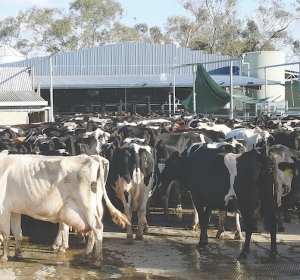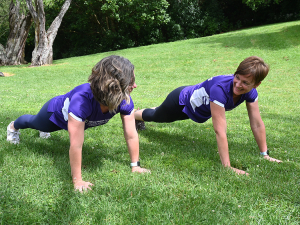The amount of fertility-related data contributed by dairy farmers to the Australian Dairy Herd Improvement Scheme (ADHIS), supported by Dairy Australia, has already increased significantly. Between October and December 2013, dairy farmers submitted 858,110 mating records, of which 123,325 were from cows that had not previously been part of ABV calculations. This is more than double the average increase over the last three years for the same period. The increase follows a recent upgrade of one of the key herd management software packages used on dairy farms, Easy Dairy.
Dairy Futures CRC’s chief executive officer, Dr David Nation, says this is an excellent start to a coordinated industry effort to boost dairy cattle fertility.
“Dairy farmers need breeding values in order to select for fertility, and breeding values are only reliable if they are based on plenty of good data,” he says.
“Improving dairy cattle fertility is one of the CRC’s key research focuses, and we know that a lot of quality fertility data is being lost. Farmers collect it for their own herd management, but it does not always flow from farms to data processing centres.”
The solution was a coordinated effort between Dairy Futures CRC, the ADHIS and a range of other parties to maximise the industry benefits from the work being done on farms. Since early 2013, the project team has been working to identify and remedy barriers that prevent fertility data being included in breeding value calculations.
Nation says the upgrade by Easy Dairy was timely and had produced immediate results. “This recent boost in data is a very promising result from early adopters of the upgrade, and we hope to see even greater impact as more farmers get on board.”
ADHIS extension and education manager Michelle Axford encouraged farmers to ensure their data was included in Australian breeding value (ABV) calculations. “We know there is a lot more quality data on farms that could be used to bring about faster genetic gain within herds,” she says.
“We’re asking farmers who use herd management software to check they are using the most recent version, and make sure they enter mating data by mid-February so it can be included in the April 2014 ABV calculations. We expect to see better fertility breeding values in April because more data is flowing.”
Nation says the fertility data project was just one of a number of ways
the CRC was working with other industry organisations to improve dairy cattle fertility.
“Earlier work has improved the fertility ABV by incorporating more fertility-related indicators into the calculation model. This ongoing work with fertility data will unlock the benefits by channelling more data into the calculation.
“Collectively, we believe our fertility work will increase the six-week in-calf rate by 10% over time, which would return the fertility of the national dairy herd to levels not seen since the 1990s,” Nation says.
















